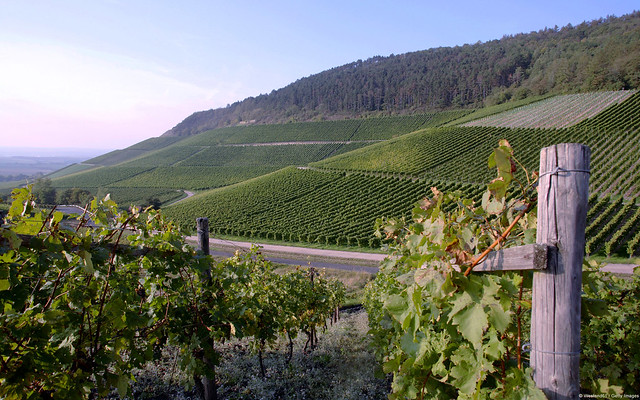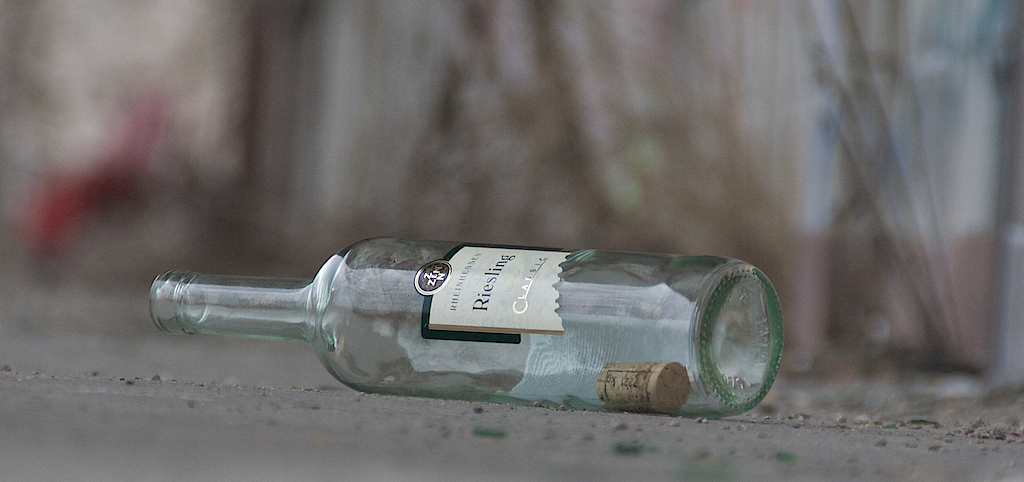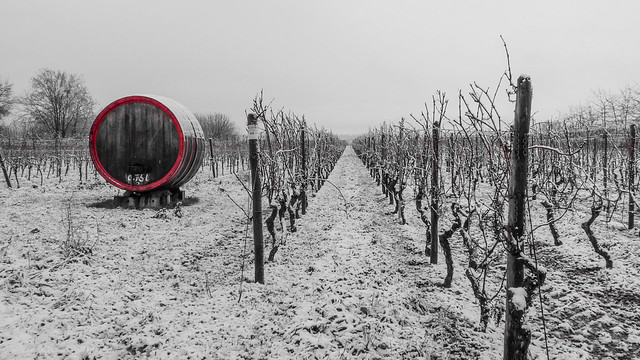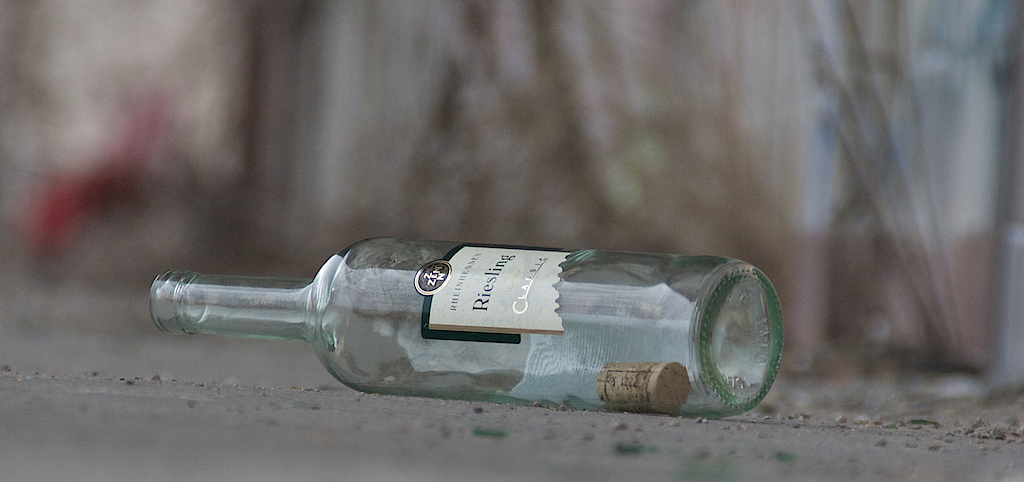In Germany, wines have been cultivated since at least the 4th century. Its vineyards are among the world’s tallest, reaching above the 50 parallel — that’s about as far north as grapes can grow! Wine growing in Germany is a special part of the country’s agricultural industry, typically the
composition is as follows: two-thirds is dedicated to white wine while one third is dedicated to red wine. Wine has conquered the metropolis, it is seen as a way of life. It has strong ties to nature and stability. Today, many young people assume their ancestors — they are proud of the land
they come from and want to create something from nature’s materials. Using state of the art equipment in the vineyard and in the cellar, today’s winemakers produce more internationally renowned premium wines than ever before.
Wine is characterized by the unique personality of its creator. They represent values, sustainability, passion, spirit, and tradition. It has always added splendor to everyday life. Why does wine have this special significance? No other fruit has been subjected to such occult. This
delicious drink was pressed from grapes 8000 years ago. The ancient Greeks and Romans even had a special God dedicated to it — Dionysus — the drinks of the God’s was born. The drink was quickly spread throughout Europe and it delighted people. It eventually made its way into
Germany and today, premium German wines are highly sought after all over the world.
This potential is distributed amongst 13 fantastic wine growing regions. Steep slopes and secluded valleys as you find across the River Rhine are typical for the German wine growing regions. Here the sun shines directly onto the so-called ‘Grapezone’. This makes the flavors of
the grape even more intense. There are a total of 140 registered grape variety in Germany which gives each wine its distinct flavor. Stay tuned as we list our favorite bottles of wine from Deutschland!

1. Riesling
Germany is home to almost half the world’s Riesling. A love for its versatility, elegance and aging potential, it’s the country’s undisputed grape. Riesling has several different faces and variations, you can almost do everything with it. You can consume the wine immediately after it has been
bottled or age it for 50 years. Traditionally, Riesling can be found in all the export countries and pairs well with food. Outside Germany, consumers envision Riesling as sweet white wine. In reality, it can be made sparkling, off-dry or lusciously sweet. Interestingly, the majority of the drink
consumed in the domestic market is essentially dry.

2. Spätburgunder (Pinot Noir)
Pull the cork on a fine bottle of Pinot and that’s what you should smell. Spätburgunder is grown in all of Germany’s 13 regions and leaves a lasting impression on your palate. It is full-bodied and rich but not heavy, high in alcohol, yet neither acidic nor tannic. It has substantial flavor despite its
delicacy. The most appealing quality of Pinot Noir is probably its soft velvety texture. Ultimately, finesse and elegance over power are characteristics of this delicious bottle.

3. Müller-Thurgau
This particular wine gets its name from its inventor, Dr. Herman Müller (Thurgau, Switzerland). Created in 1882, Müller-Thurgau is a cross between Riesling and Madeleine Royale. Most wine connoisseurs don’t agree with this bland, off-dry white wine which dominated market shelves in
1980s Germany. Commercial taste vastly changed and the variety became unpopular eventually. Consequently, Müller-Thurgau was replaced with the more favorable Riesling and Silvaner. Despite its downfall, its role in rebuilding the German wine industry should not be overlooked.
This was the drink that restores morale in its people post-war.

4. Silvaner
Interestingly, Silvaner is a variety of white wine that is more popular amongst wine growers than consumers. This is because, the grapes ripen earlier, making them less prone to pests and winter frost. Additionally, they are adaptable to different environments and will grow in a number of
vineyard sites. The same cannot be said about Riesling. Consequently, Silvaner wine grapes were widely planted in the 20th century. This variety of white wine is usually characterized by herbal notes with a hint of melon and citrus. It has a substantial body and the cool climate it is
grown in, helps prevent low levels of acidity.
Fun Fact: Silvaner is often referred to as Dracula Wine for it is old, pale and exposure to direct sunlight will lead to its tragic death! It tastes best when young.

5. Grauburgunder (Pinot Gris)
Pinot grigio is planted extensively in parts of Italy and Germany. While Grauburgunder is classified as white wine, the grapes are usually reddish-grey in color. This wine is more versatile and pairs with a meal of white meats and fish dishes or can be served simply as a refreshing
aperitif. Typically, Grauburgunder is a crisp, dry wine with medium levels of acidity as opposed to its more fragrant counterpart Ruländer which has a fuller body.

6. Eiswein
You wouldn’t think that frosty conditions are good for producing wine, however this an integral part of making Eiswein or Ice Wine. Eiswein is a refreshing, sweet dessert wine that is made under specific conditions. To begin with, growing these wine grapes is a challenge for vintners.
The climate must be warm in the summer and cold enough to freeze the grapes during winter. These have a distinct fruity or floral flavor with a low alcohol content — between 7%-12%. Due to the intensity of labor that goes into the production of this wine, it is usually priced at a higher level and is great for gifting purposes.

How to Read the Wine Label:
German culture has never aired towards simplicity and their wine labels are no exception. The grape variety is typically noted on the label but beyond that things get cryptic for the consumer. Typically, the 13 quality wine regions that can be listed on the label. In addition, the village of
origin and single vineyard or einzellage are often designated. Unfortunately for consumers, the most misleading exceptions in all of wine law, allows producers to use the name of a grosslage, a large expansive mediocre quality vineyards in the same way as a single vineyard. This makes it
difficult for consumers to select the better wine and the only way of inferring it is the price.

